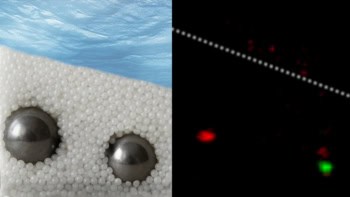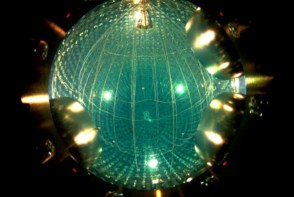Physicists in Germany have made an atomic force microscope capable of imaging features less than 100 picometres across. The new "higher-harmonic" force microscope uses a single carbon atom as a probe and has a resolution that is at least three times better than that of traditional scanning tunnelling microscopes (S Hembacher et al. 2004 Sciencexpress 1099730).
Scientists routinely use scanning tunnelling microscopes to obtain topographic maps of surfaces, and it is possible to identify individual atoms in these images. A scanning tunnelling microscope (STM) works by measuring the currents produced by electrons as they tunnel from the sample to the tip of the microscope. However, scanning tunnelling microscopes can only probe some of the electrons in the surface. In an atomic force microscope (AFM), on the other hand, electrostatic forces between the microscope tip and the sample are measured. All the electrons on the surface contribute to these forces.
Franz Giessibl and colleagues at the University of Augsburg used a single carbon atom as a probe in their AFM to image an individual atom on the surface of a sharp tip made of tungsten. This tip is normally the probe in an AFM and the carbon atom is usually the sample, but in the Augsburg experiment the roles of tip and sample have been reversed.
As the tungsten tip is made to oscillate at sub-nanometre amplitudes, the interaction between the tip atom and the carbon atom produces higher harmonic components in the underlying sinusoidal wave pattern. Giessibl’s team measured these signals to obtain an ultrahigh resolution image of the tip atom that showed features just 77 picometres (77 x 10-12 metres) across.
The team now plans to try other light atoms as probes, such as beryllium and hydrogen. “Advances in microscopy have, in many cases, spurred further breakthroughs in the natural sciences, and we are confident that our work will also enable new progress in nanoscience,” Giessibl told PhysicsWeb.



